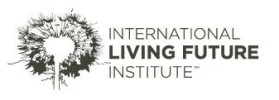The intent of the Diversity Category is for organizations to cultivate workplaces that are diverse at all levels of the workforce, reflecting an understanding that diversity encompasses a wealth of identities, abilities, beliefs, and experiences. Inviting and embracing workforce diversity are integral to organizational health and vibrancy. All individuals deserve to be treated with fairness and respect as whole human beings, including the diverse experiences and perspectives that make them who they are. Moreover, truly diverse organizations ensure the richness of these experiences, and perspectives are equitably represented and included in senior leadership and decision-making roles.
In the same way that biodiverse ecosystems have inherent health and resilience, diverse workforces offer parallel strengths when found within work environments that facilitate and celebrate differences while being rooted in the interconnectedness of the human experience. Given its profound impact and influence on every aspect of our lives, the built environment must reflect and support the vastness of the individuals who make up our communities. A diverse building industry can better shape built environments in ways that reflect the beauty, priorities, and needs of all communities and ecosystems.
Varying facets of identity have been the basis of marginalization and discrimination in the workplace, resulting in individuals being deterred from following their passions and reaching their potential—leading to lost diversity in our communities as well. The Just program primarily focuses on the building industry, which has historically been dominated by people who identify as white men.1 Cultivating an authentically diverse workforce and retaining that diversity over time takes concerted, intentional effort, including advocacy to remove existing barriers and create opportunities for underrepresented and underestimated groups to enhance industry-wide diversity. Just organizations elevate these groups in policies and practices through acknowledgment, equal opportunity, inclusive outreach, and culturally relevant, action-oriented support. Organizations need to not only take steps internally, but also in the broader industry to encourage developing, engaging, and retaining a diverse talent pool.
Beyond the moral imperatives of diversity in the workplace, the economic benefits of a diverse workforce accrue both to society at large and to the organizations themselves. Although levels of diverse representation are still highly variable across nations—with progress being slow overall—data show that more racially, ethnically, and gender-diverse companies outperform those with lower levels of diversity, and the relationship between more diverse leadership and better operational and financial performance is well documented and compelling.2
By defining three Indicators for the Diversity Category, the intent within Just 3.0 is not to cloud distinct identities or emphasize certain aspects of identity over others; rather, Living Future seeks to bolster momentum that has been building within organizations worldwide in support of racial, ethnic, and gender diversity, and to allow organizations to focus on additional modes of diversity that are meaningful in their context. Living Future encourages organizations to move forward thoughtfully in establishing a workforce that reflects an expansive view of diversity, looking beyond race, ethnicity, and gender.3 Organizations should make intentional decisions, with consideration to relevant local, cultural, and/or industry context, around where to focus their efforts and measure the impact of these efforts as well.4
____________________________________________________________________________________________________________________________________
1 Melton, P. (2023, April 19). Re-forming the Building Industry: Equity, Diversity, and Inclusion. BuildingGreen. Retrieved September 25, 2023, from https://www.buildinggreen.com/feature/re-forming-building-industry-equity-diversity-and-inclusion.
2 Hunt, V., Dixon-Fyle, S., Prince, S., & Dolan, K. (2020, May). Diversity Wins: How Inclusion Matters. McKinsey & Company. Retrieved February 24, 2023, from https://www.mckinsey.com/~/media/mckinsey/featured%20insights/diversity%20and%20inclusion/diversity%20wins%20how%20inclusion%20matters/diversity-wins-how-inclusion-matters-vf.pdf.
3 See Recruitment Resources to learn more about different types of diversity in the workplace.
4 Menzies, F. (2019, January 4). Meaningful Metrics For Diversity and Inclusion. Include-Empower.Com. Retrieved December 29, 2022, from https://cultureplusconsulting.com/2018/10/16/meaning-metrics-for-diversity-and-inclusion.



